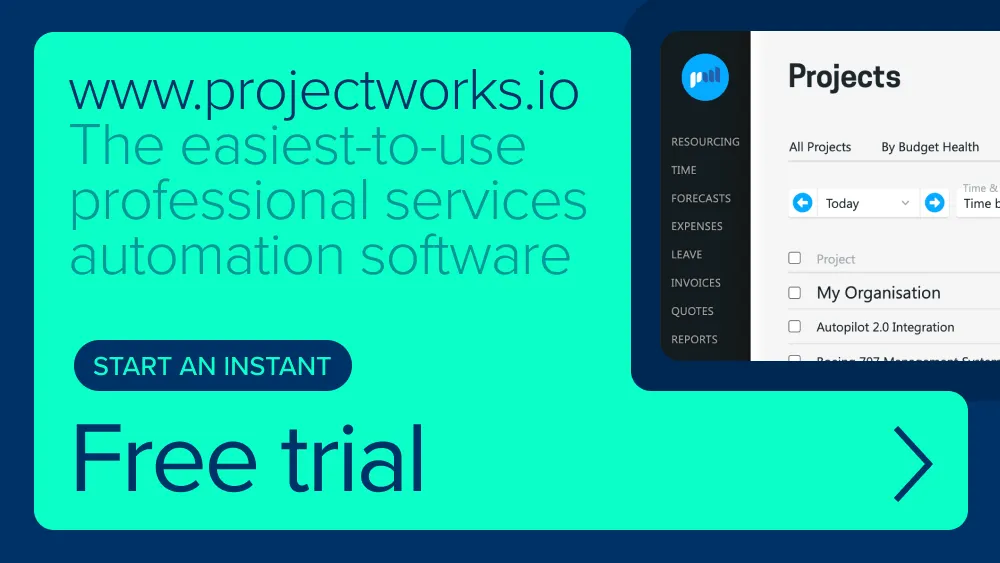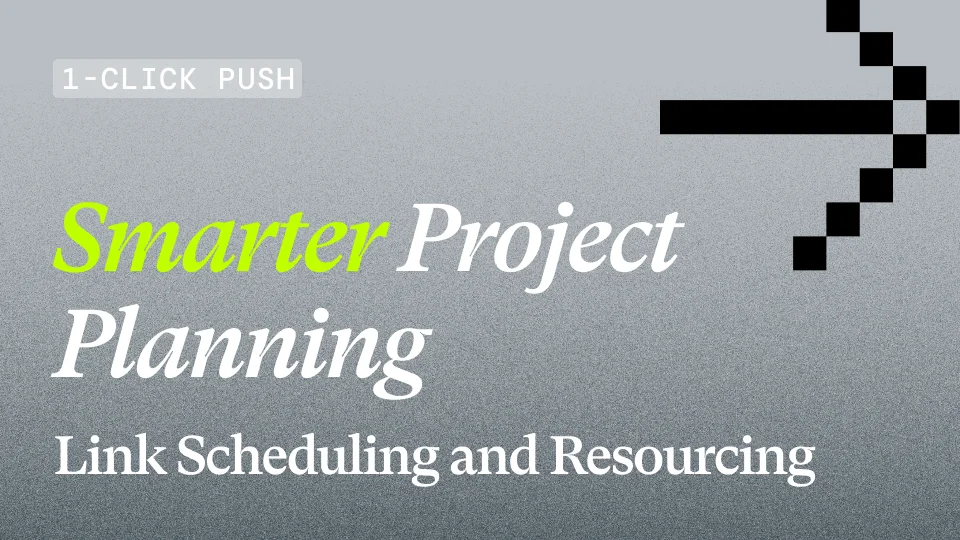Smarter Capacity Planning For Large Teams With Resource Planning Software

At service firms of any size, the efficiency of your team has a large influence on your profitability. Large teams are capable of producing big profits, but they can also be more susceptible to costly inefficiencies. The right resource management software provides the visibility and controls large teams need to protect utilization and margin.
That’s one reason why capacity planning for large teams is essential. Capacity planning is the art of matching your supply of resources to the demand you have from customers or clients. By successfully balancing your capacity with demand, you'll be able to reduce bench time for your team or mitigate your staff becoming over-resourced to meet ambitious deadlines. Treat it as a core part of project resource management rather than a one-off spreadsheet exercise.
Long-term capacity planning with resource management software
Communication is key to creating any good plan. When you're planning long-term capacity for your team, especially while chasing company growth targets, it pays to know what is in the sales pipeline so that you can match it to your resource pool and existing project pipeline. Pipeline insight plus resource planning software gives you forward demand vs supply by role.
So, long-term capacity planning is helped by actively communicating with your sales team. Clear communication with your sales team will help with long-term capacity needs as well as help the sales team understand when they can promise project deliveries. A weekly cadence works best when everyone looks at the same resourcing software view.
Weekly meetings with project managers and the sales team can provide a roadmap for your resourcing that will enable you to fulfil project expectations that match the volume that is coming through the pipeline. Use a shared resource planning tool to review incoming deals, provisional bookings, and hiring needs.
To ensure your teams are going to have the right resourcing to fulfil your long-term growth goals, you need clear mechanisms to show who's resourced where and how often. Portfolio heatmaps and utilization targets inside resource management tools make this transparent.
If you're a company that's still running spreadsheets to manage the project pipeline, to account for the extra headcount needed to fulfil the work obligations of growth, you want to consider a platform that handles capacity planning, such as Projectworks. Projectworks is resource management software for professional services, replacing fragile spreadsheets with live capacity views.
With clear communication between the sales and project teams and a tool that accurately shows who is going where you can plan capacity for the long term and know in advance what work you can take on and where you're going to need new resources.
Something to consider that adds a huge amount of value to long-term capacity planning is the ability of your resourcing to contribute automatically to other key reports that benefit the business, without having to export or double-handle any data. Look for project and resource management platforms where bookings feed utilization and hiring reports automatically.
Projectworks can do this. When you enter planned work into the resourcing screen, the data automatically fills utilisation reports to give estimations of utilisation rates before the team hands in their timesheets. This is a hallmark of mature resource management planning.
Another benefit that Projectworks offers is the ability to use placeholder resourcing to pencil in the hours that need to be worked before you assign someone to the job. Placeholder roles let you model demand in your resource planning tool without naming people too early.
The great thing about placeholder resourcing is that once you have hired or identified someone with capacity, you can simply swap the resource out for a real person. Swapping placeholders to named people keeps the plan intact in modern resourcing software.
Short-term capacity planning
Short-term capacity planning deals with immediate capacity issues facing your firm, anywhere from the next few days to the next six months. Often these issues can be fixed by reshuffling resources or bringing in an external contractor in the short term. Use resource management software conflict views to move bookings and solve clashes quickly.
For example, if there are workforce gaps leading to project delays, you will need to quickly address them to ensure you don’t disappoint your clients. This can include training or upskilling current staff, offering entry-level internships to support skilled staff, or identifying a specialised contractor with a good reputation on standby to fill in at short notice.
Another important element of capacity planning is managing unscheduled absences. A crucial staff member becoming unavailable at a key stage of a project can derail progress and even cause knock-on delays in other pieces of work. Calendar and leave integrations in resource planning software help you see gaps early.
Aim to streamline the way staff work to create efficiencies, either with technology or better systems that increase productivity.
Comparing long-term and short-term capacity planning
Plainly, the goals of long-term and short-term capacity are the same. The difference is horizon: your resource management tool should support both scenarios.
One key difference between short-term and long-term capacity planning strategies is the scale. Neither is less significant than the other and at the time, can seem like big problems if they occur during high-pressure moments in a project.
Another difference is that long-term capacity planning looks at the overall company growth trajectory, which can include significant changes to your firm's structure. Geographical expansion, professional diversification, and technological advancements can all be taken into account, requiring more elaborate, tactical steps.
It’s important to consider both long-term and short-term capacity plans when making resourcing decisions. For example, if you’re consistently using a short-term resourcing solution to make up for a shortfall, it may be that you need to consider more long-term options such as making a full-time hire or restructuring your staff to better cater for business needs. Scenario planning in resource planning software helps quantify the trade-offs between contractors, hiring, and sequencing work.
Read more: Resource Planning Strategies For Large Projects — Projectworks
Read more: Resource Overallocation: Ways You Can Avoid It Effectively — Projectworks
Using tools for capacity planning
As with many other workforce management strategies, capacity planning is made much easier with specialised technology. Capacity planning tools such as Projectworks have been specifically designed to provide data-driven insights to assist decision-making. Visibility is one of the big capacity management challenges, which is where technology comes into its own. Shortlist platforms positioned as resource management software for consulting, not generic task trackers.
For example, you can see future utilisation to help with planning and individual project resource allocations. This is core project resource management functionality.
You can also assess historical resource utilisation rates to see exactly how close to capacity your people are operating. This helps to recognise when staff are under pressure and need relief, or when it’s time to start implementing utilisation targets to motivate your staff to meet your firm's requirements for billable time.
Capacity planning tools can also create skills databases across your entire organisation, helping project managers allocate tasks based on expertise and availability. This helps to deal with last-minute changes to projects, where you can identify the best person for a job at short notice. Skills and role tagging are must-haves in modern resource planning tools.
Capacity planning leads to better client and employee satisfaction
One of the big problems with large teams is the complexity of processes and difficulties working across different departments and teams. This is often the biggest opportunity to improve your profitability, where you can greatly increase your capacity by creating efficiencies.
Having more people means individuals can get lost in the noise, making it harder to recognise and prevent burnout.
Capacity planning, both in the long-term and short-term, helps to improve all aspects of your resourcing and therefore increases your profit margin and most accurately satisfies customer demand. When your resourcing software becomes the shared source of truth, leaders, PMs, and delivery teams align decisions to the same capacity signals.

Related Articles

3 Project & Resource Management Upgrades MBB Made In Order To Grow Their Team By 300%
MBB Group is a high-growth independent advisory business, with a reputation for solving some of Australia’s toughest infrastructure challenges. As Australia’s infrastructure pipeline began to scale rapidly, so too did MBB’s team of energy, transport, water, mining, defence, logistics, and social infrastructure experts.

